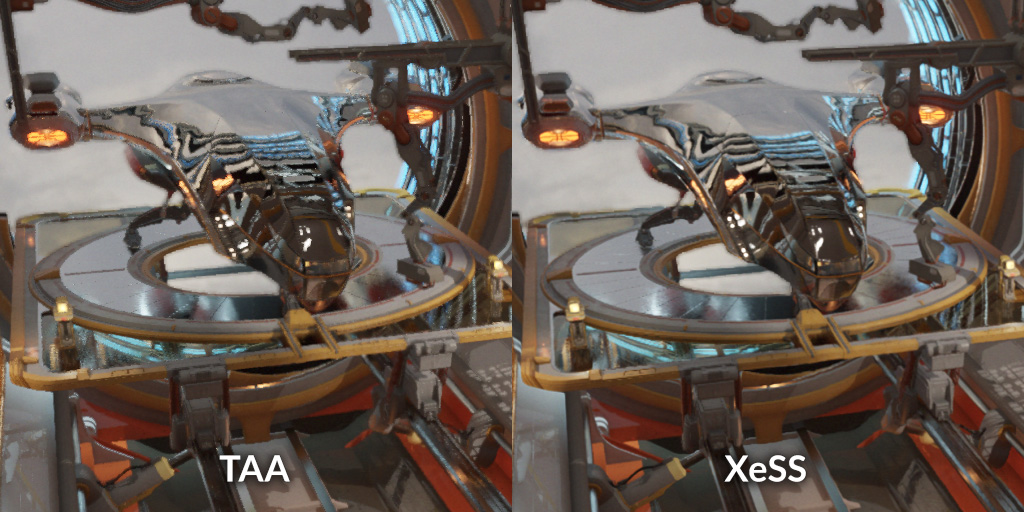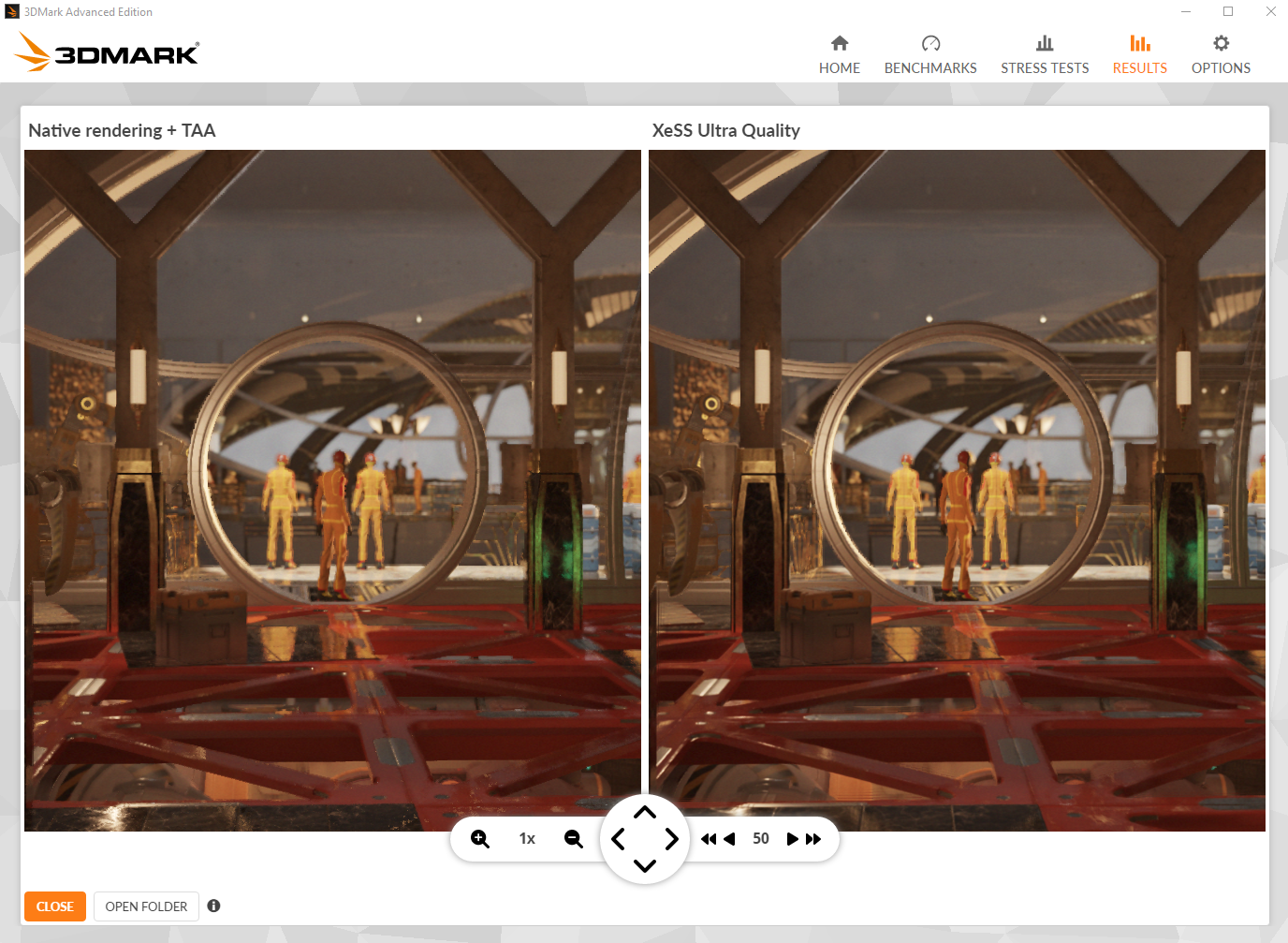New 3DMark feature test for Intel XeSS.
October 5, 2022
We’re excited to release a new 3DMark feature test for Intel’s new XeSS AI-enhanced upscaling technology. This new feature test is available in 3DMark Advanced and Professional Editions.
Compare XeSS performance and image quality with the Intel XeSS feature test.
3DMark feature tests are special tests designed to highlight specific techniques, functions, or capabilities. The Intel XeSS feature test shows you how XeSS affects performance.
The 3DMark Intel XeSS frame inspector tool helps you compare image quality with an interactive side-by-side comparison of XeSS and native-resolution rendering.
Check out the images below to see an example comparison of native resolution rendering and XeSS in the new 3DMark feature test.
Comparing performance and image quality with the Intel XeSS feature test
The test renders a scene based on the 3DMark Port Royal benchmark two times to show the effect XeSS has on performance and image quality. The first run measures baseline performance by rendering the scene with temporal anti-aliasing (TAA) at the output resolution.
The second run renders the scene at a lower resolution and then uses the selected XeSS mode to upscale the frames to the output resolution.
The result screen shows you the average frame rate from each run and the difference in performance expressed as a percentage.
3DMark Intel XeSS frame inspector
The 3DMark Intel XeSS feature test includes the frame inspector tool. This tool lets you compare image quality with a side-by-side view of Intel XeSS and native-resolution rendering. You can render up to 100 consecutive frames from the feature test and freely pan around or zoom in up to 32×.
About Intel Xess
XeSS (Xe Super Sampling) is a new Intel graphics technology that uses AI-enhanced upscaling to improve performance while maintaining high image fidelity. XeSS renders each frame at a lower resolution to boost performance and then uses AI upscaling to generate frames at the target output resolution.
Find out more about XeSS on Intel's website.
Available now
The Intel XeSS feature test is a free update to 3DMark Advanced Edition for users who purchased 3DMark after January 8, 2019. You can buy 3DMark on Steam or direct from the UL Benchmarks website.
To run the Intel XeSS feature test, you must have a GPU that supports Intel XeSS and Microsoft DirectX Raytracing Tier 1.1. XeSS compatible GPUs include Intel Arc GPUs, as well as AMD Radeon and NVIDIA GeForce GPUs with Shader Model 6.4 support. You also need Windows 11 or Windows 10 64-bit, version 20H2 or newer.
If you already own 3DMark but bought it before January 8, 2019, you'll need to buy the Port Royal upgrade to unlock the Intel XeSS feature test. You can read more about 3DMark updates and upgrades here.
3DMark Professional Edition.
The Intel XeSS feature test is available now for 3DMark Professional Edition customers with a valid annual license. Customers with an older, perpetual Professional Edition license will need to purchase an annual license to unlock the Intel XeSS feature test.
Recent news
-
Procyon Labs launches with FLUX.1 AI Image Generation Demo
November 4, 2025
-
3DMark Solar Bay Extreme is available now!
August 20, 2025
-
3DMark Speed Way Teams up with PC Building Simulator 2!
July 17, 2025
-
New Procyon AI Benchmark for Macs now available
June 25, 2025
-
3DMark for macOS available now!
June 12, 2025
-
New Inference Engines now available in Procyon
May 1, 2025
-
Try out NVIDIA DLSS 4 in 3DMark
January 30, 2025
-
Test LLM performance with the Procyon AI Text Generation Benchmark
December 9, 2024
-
New DirectStorage test available in 3DMark
December 4, 2024
-
New Opacity Micromap test now in 3DMark for Android
October 9, 2024
-
NPUs now supported by Procyon AI Image Generation
September 6, 2024
-
Test the latest version of Intel XeSS in 3DMark
September 3, 2024
-
Introducing the Procyon Battery Consumption Benchmark
June 6, 2024
-
3DMark Steel Nomad is out now!
May 21, 2024
-
Procyon AI Inference now available on macOS
April 8, 2024


